Little ones love to learn through exploration, discovery, and PLAY. They crave experiences that incorporate their senses and require them to experiment or make observations. As your child’s first teacher, you can introduce preschool math concepts such as numbers, counting, shapes, patterns, and measurement as you play together. Not sure how? Here are ten quick and easy preschool math games to try!
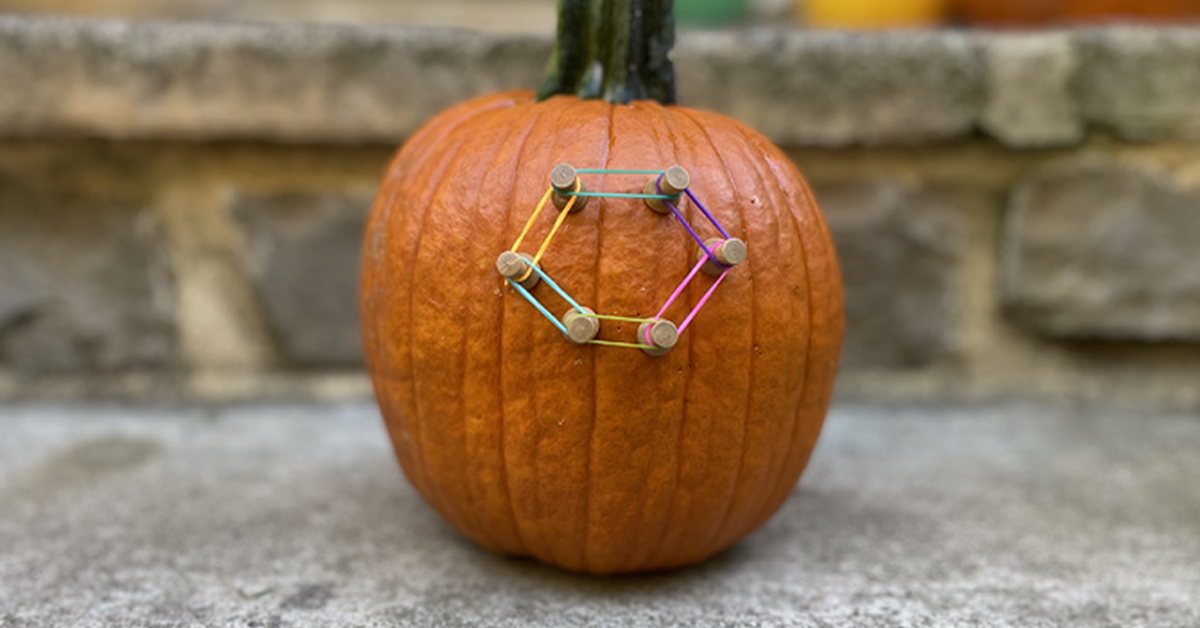
1) Develop Fine Motor Skills with Spherical Geoboards
If you’re willing to get a little bit messy, here’s a fun, hands-on way to get your child practicing their shapes.
To start, make your own 3D geoboard out of a pumpkin or melon by helping your child insert push pins or gently hammer golf tees with a wooden mallet around the surface. Then, let your child stretch colorful rubber bands or hair ties around the pegs to create shapes, a pattern or designs. Challenge them to create different shapes (and sizes) such as triangles, squares, rectangles, or hexagons.
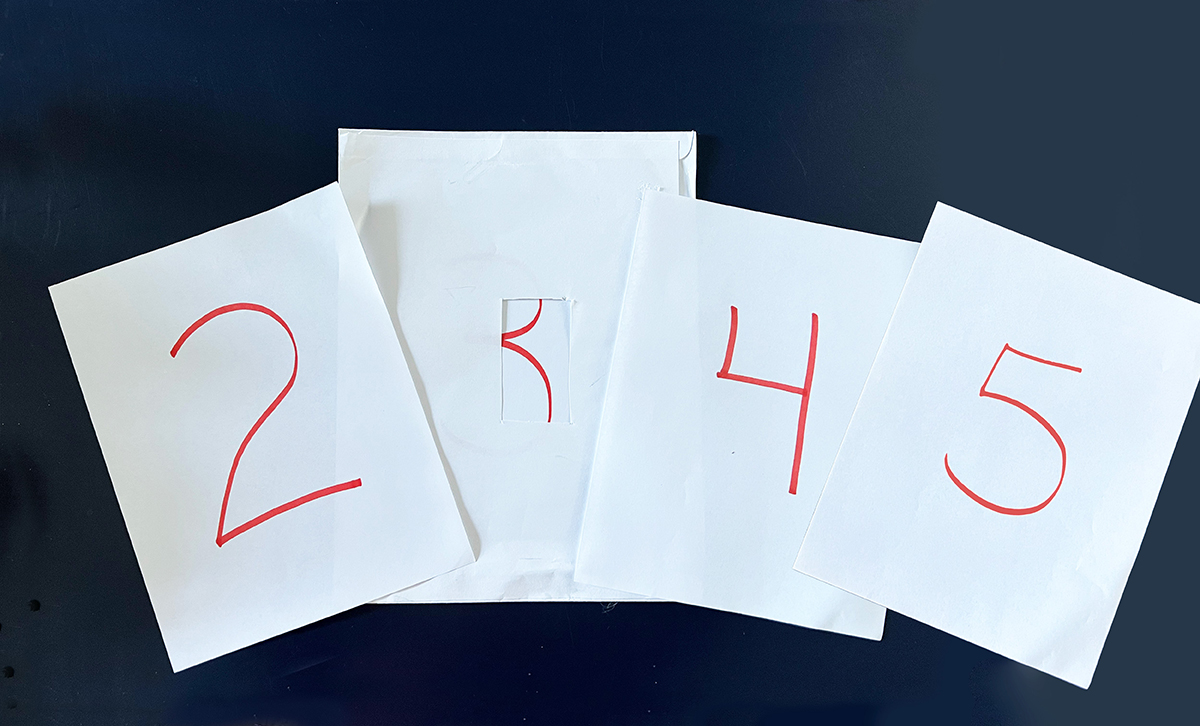
2) Mystery Number
This is one of our favorite preschool math games and it helps early learners develop number recognition math skills, which is the ability to identify numbers by their name and appearance. Number recognition is an essential skill to solve even the most basic math problems. It’s also one of the first skills that preschoolers must master when embarking on their mathematics journey.
For this activity, cut a rectangular window out of the front of a large mailing envelope. Then, print the numerals 0–9 on sheets of 8 ½” x 11” paper. The numbers should be large enough that they’re only partially visible in the rectangle. Next, slide one sheet into the envelope and have your child try to figure out which number is peeking through the opening. Prompt them with clues and assistance as needed.
Once they think they know which number it is, take the paper out of the envelope to check. Finally, have them trace the number with their finger, say it aloud with you, and count it out.
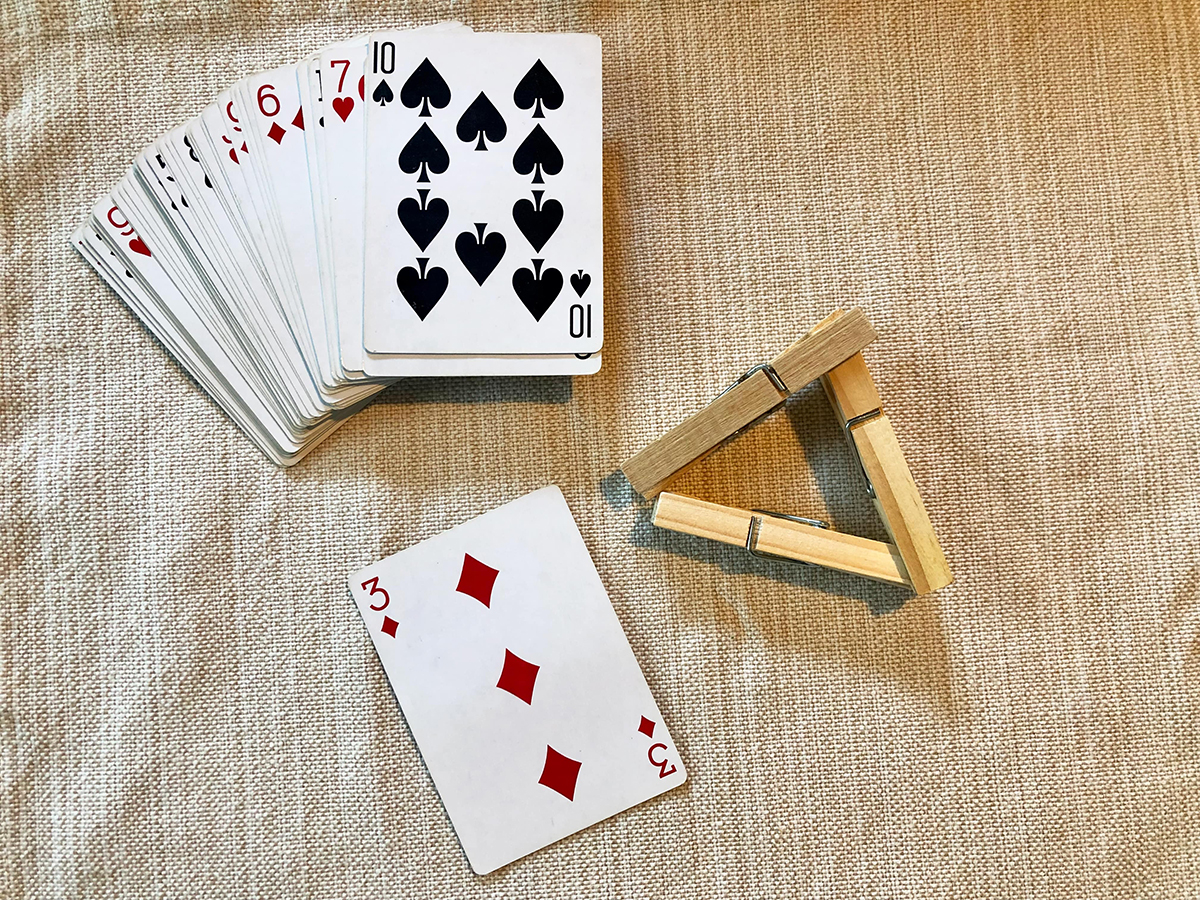
3) Count, Clip, Create
This is a very simple way to practice both number recognition and shapes.
To play, you only need some spring-loaded clothespins and a deck of playing cards. Before you begin, be sure to remove the face cards and tell your child that an ace is 1, then place the cards face down. Have your child draw a card and then take that number of clothespins. Next, ask them to try to create a shape with that number of clothespins. If they can’t after a minute or two of trying, they can select another card and add that number to the previous one.
Let your child explore and create a shape by clipping the clothespins together. For example, if your child selects a card with a three and takes three clothespins, they can create a triangle. Show them that they can make a square if they add one more clothespin. Then, add one more clothespin to the square to make a pentagon.
Encourage creativity! If a card with a seven is selected, the shape they create might be irregular. Use your imagination and see if you can invent other preschool math games using a deck of cards.
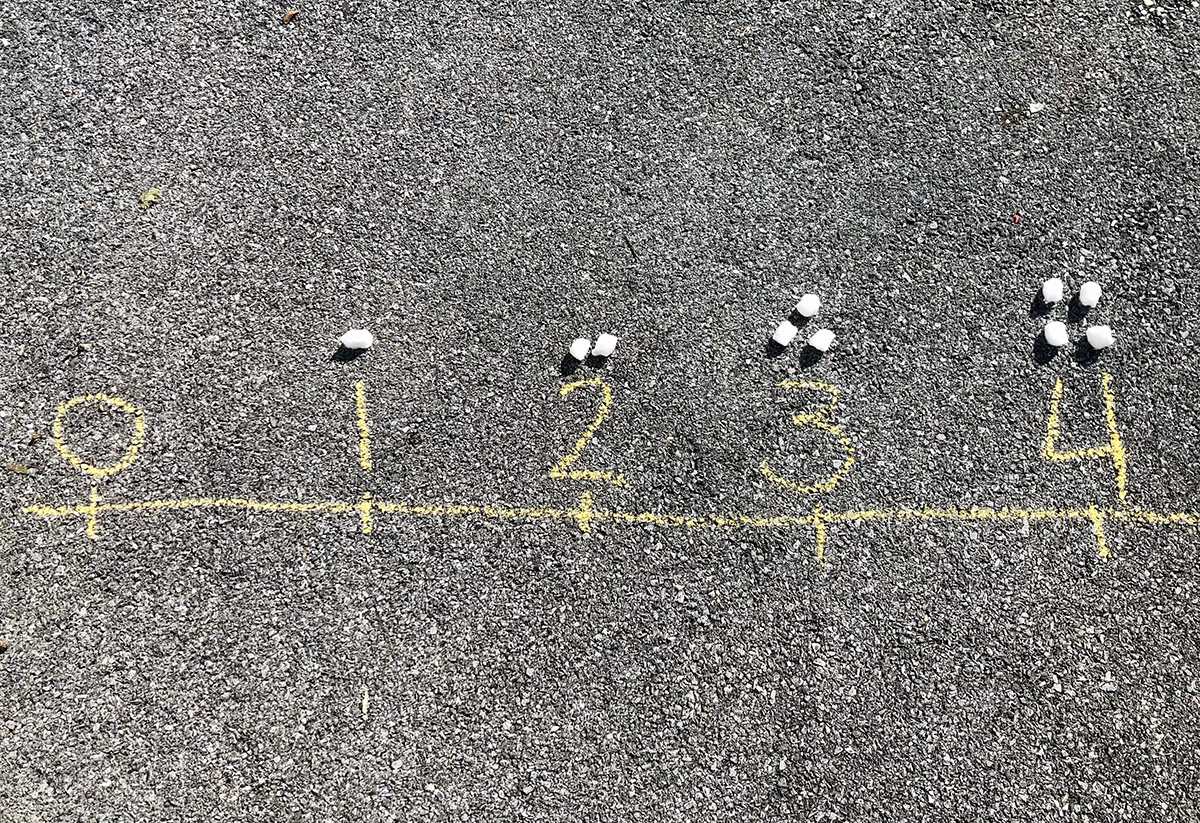
4) Lay a Foundation for Basic Math Skills with Numbers in a Line
Here’s a great game to get your little one up and moving while practicing number recognition, counting, and subitizing (the ability to instantly recognize the number of objects without actually counting them). Create a number line from 0–10 outside with chalk or inside with painter’s tape and index cards or sticky notes. Then, try the following math games with your child:
- Walk/Jump/Tiptoe Along the Number Line
Call out the name of each numeral as they step on it. As an extension activity, place a set of small objects, such as dried beans, next to each number, and watch your student discover that the amount increases as they step along the line. - Walk Backward Along the Number Line
Call out the name of each number as they step on it. Again, place a set of objects next to each number and point out that the amounts decrease as they step along the line. - Skip Counting
Say the numbers, “2–4–6–8–10” and have your child step or hop on each number as it’s said. Then try skip counting by threes. They’ll soon be able to repeat the pattern on their own. - Matching by Numbers or Quantities
Place a second number card or set of objects to correspond with each number along the number line. For example, next to the number 2, have your child place two socks or a second card with the number two on it.
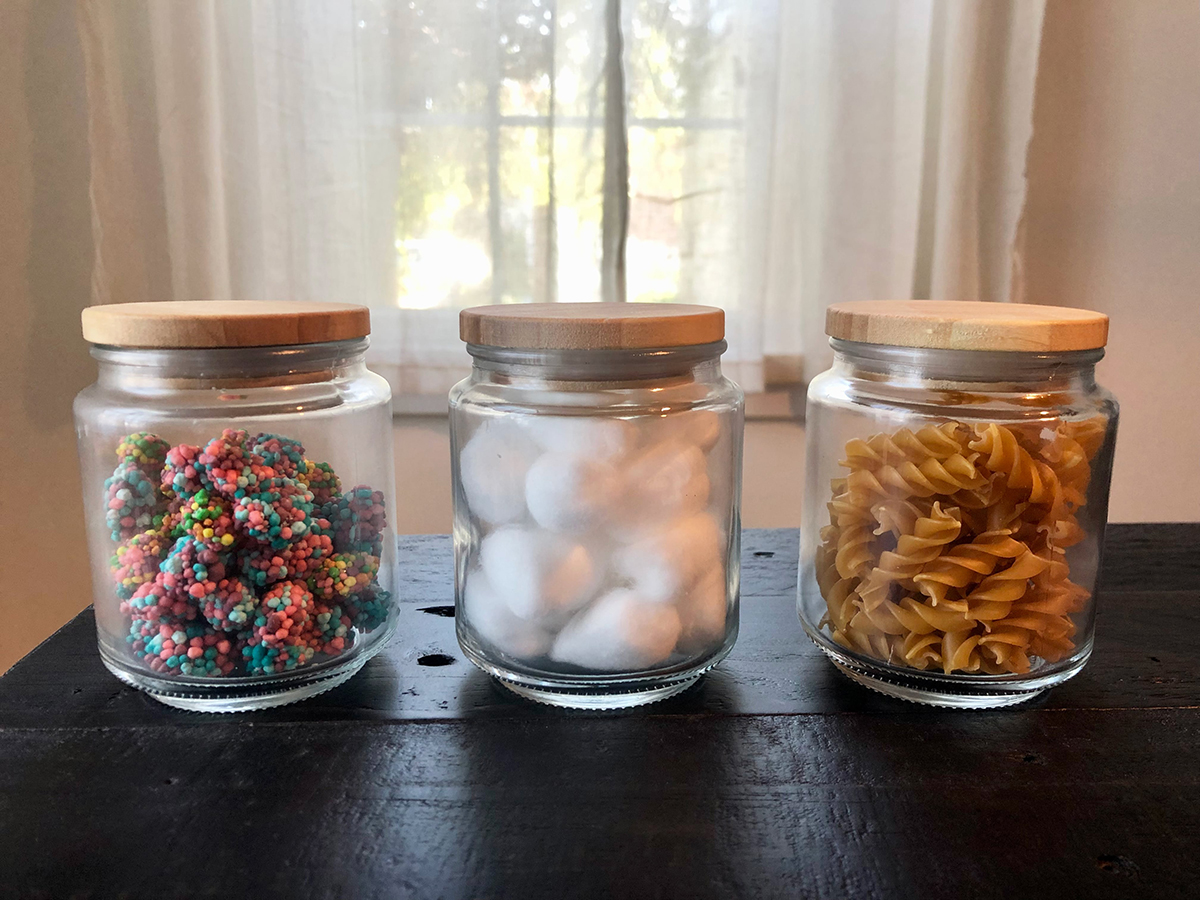
5) Guess the Amount
You’ve likely played math games like this without realizing that you were flexing your critical thinking and estimating skills.
Here’s an easy one to teach math concepts to your preschooler. To start, gather several small clear containers with lids, such as baby food jars. Fill each jar with items such as cotton balls, nuts, paper clips, beads, dried pasta, grapes, buttons, or anything that can be easily counted. Be sure to only put one type of item in each jar.
Once your jars are ready, ask your child to guess how many items are in the jars. For the first estimation, let them guess without much guidance. Then, count out the items together and compare the actual amount to the estimated amount. Refill the jar with either a different amount of the same item or with a new item. Help them make a new estimation using what they learned from their first try. For example, if the jar contained dried pasta but you put in fewer pieces the second time, talk together about what that means.
Repeat this process for the remaining jars, offering support and discussing as needed.

6) Fill the Dot
This is another easy DIY math game for preschoolers to practice estimating and counting.
First, draw several different-sized circles on a paper plate, parchment paper, or card stock. Then, water down some craft paint and have an eye dropper on hand. Have your child pick a circle and estimate how many drops of paint it would take to fill it. Next, have them fill the circle with drops of paint. Count the drops together to see how close the actual amount is to their estimate.
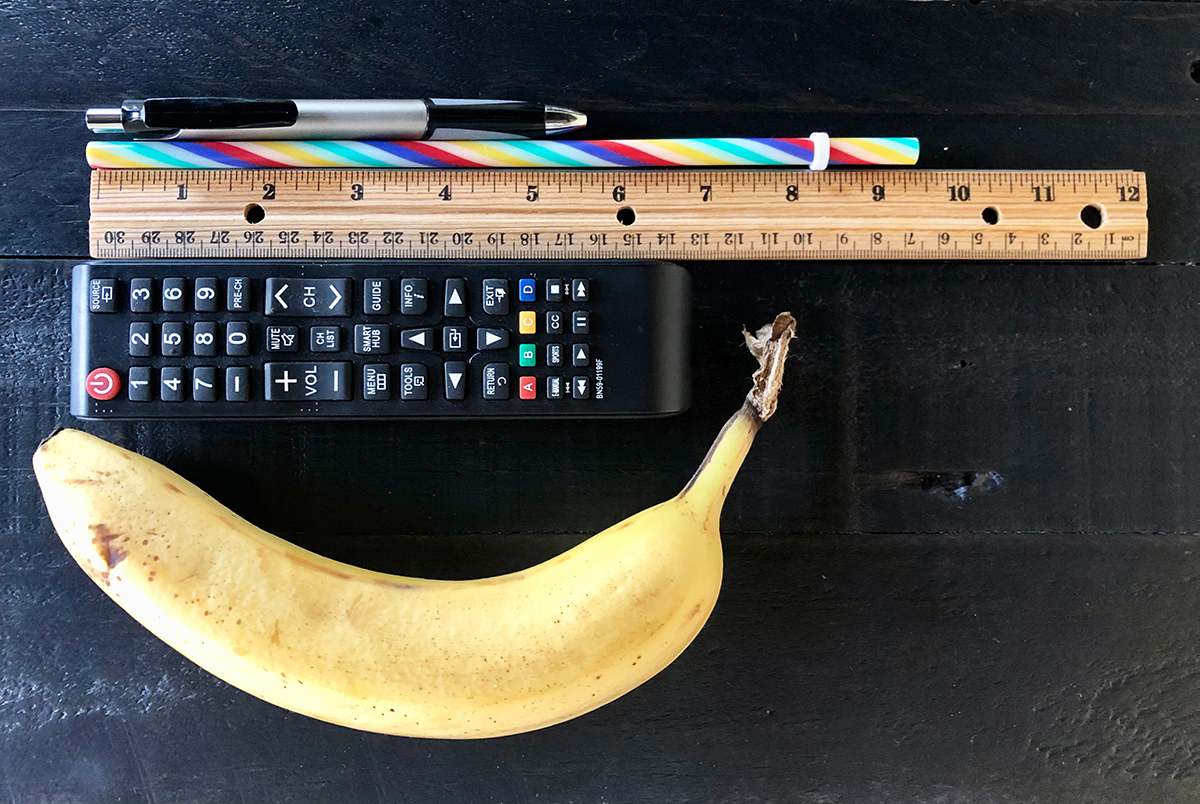
7) Measurement Scavenger Hunt
Introduce the basic concept of measurement in a fun way with a scavenger hunt. Simply select one small object and ask your child to find things around the house (or outside) that weigh the same, less, or more than your object. You can also switch things up by having them search for items that are longer, shorter, or the same size.

8) Timer Games
Familiarize your child with the concept of time by creating timer math games that they will enjoy doing with you. To start, set a time limit. Then count how many times they can do something within that time period. For example, how many times can they hop in one minute? In two minutes? Try to see how many times they can bat a balloon in the air for 30 seconds. Simply have them make a guess, set the timer, and count with your child as they play.
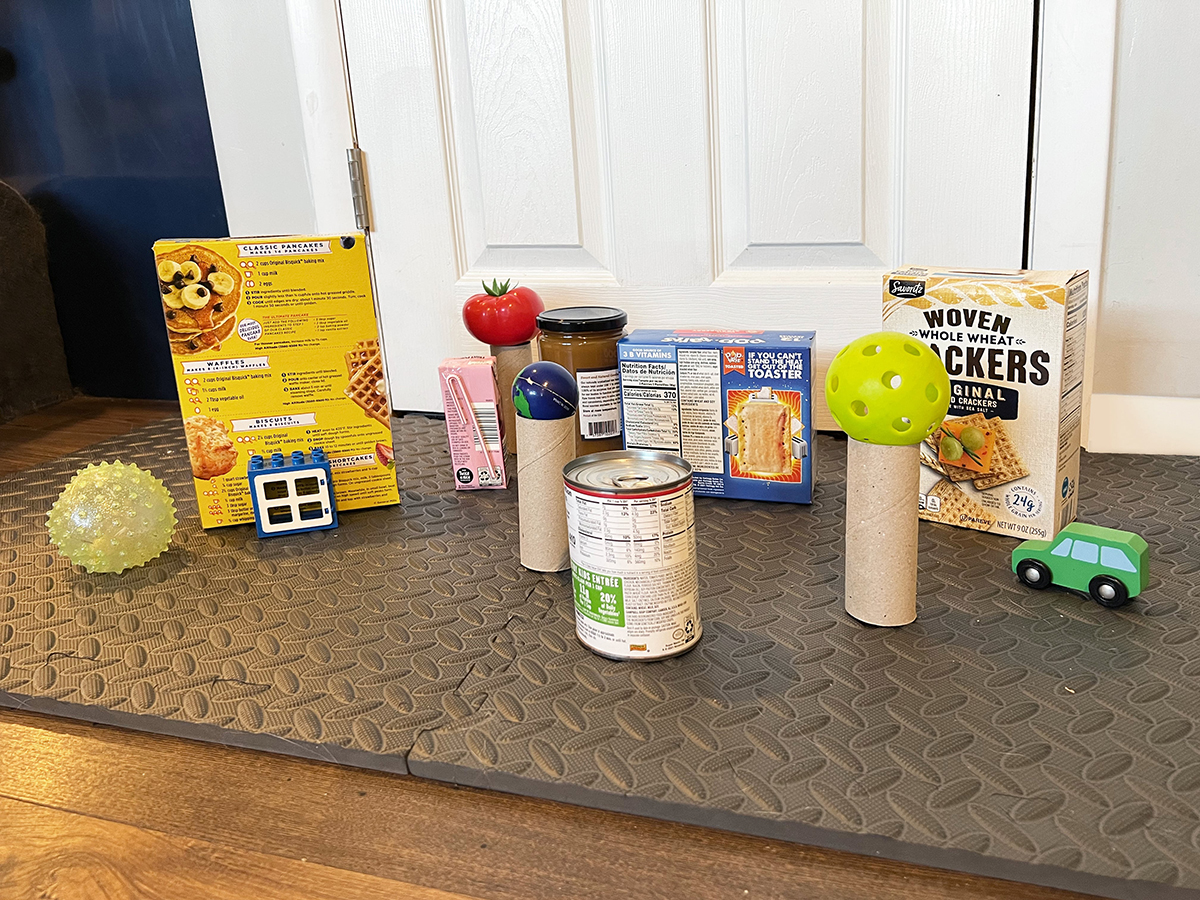
9) Shape-Scape
Go around your house and collect 3D objects such as cans, cartons, cereal boxes, paper tubes, and balls. Once you have your supplies, work with your child to create a shape-scape, or landscape based on shapes. Some ideas are to use cylinders (paper tubes) as tree trunks, spheres (balls) as treetops, rectangles (cereal boxes) as buildings, etc. You can get extra creative by pulling out the markers, craft paper, and glue to make it look more realistic or to create other shapes. This is a great activity to further develop your child’s awareness of three-dimensional shapes and spatial awareness.
10) Rubber Duck Math Race
This is an engaging game designed to help preschoolers practice counting, number recognition, and simple addition while having fun. This game combines physical activity, water play, and math skills in an exciting race that kids will love. The game is perfect for small groups of children, making it ideal for classroom activities, playdates, or family fun.
You’ll need 5-10 small rubber ducks, a large container filled with water (like a kiddie pool, bathtub, or big bowl, number stickers or a permanent marker to label the ducks with numbers (1-10), a start line and finish line, marked with tape, string, or chalk, a small net, spoon, or scoop for picking up ducks (optional, but adds an extra challenge).
Begin by filling a large container with water and placing the rubber ducks inside. Ensure that the numbers on the ducks are not visible right away. Label each rubber duck with a number from 1 to 10 using stickers or a marker. Set up a start line a few feet away from the water container, where the children will begin the race and a finish line a short distance away from the start line. At the start of the game, line the children up at the start line. When you say “Go,” each child runs to the water container, picks a rubber duck, and identifies the number on it. After recognizing the number, the child must perform an action corresponding to the number (e.g., if the duck has a “3,” they might jump three times or clap three times). Once the action is complete, the child races to the finish line with their duck. After all the ducks are collected, count the ducks together and, for added learning, add up the numbers on the ducks.
Remember, young children learn best when they’re allowed to explore outside of the classroom and make connections through play. Don’t be afraid to get creative and make up simple preschool math activities that encourage them to practice basic math concepts. Just a few minutes of fun math practice each day will build a strong foundation and encourage kids for future math studies.
Other Preschool Math Activities
We hope you’ll try these math games for preschoolers in your home or classroom! For more fun activities check out The Guild and explore our Demme Learning blog.


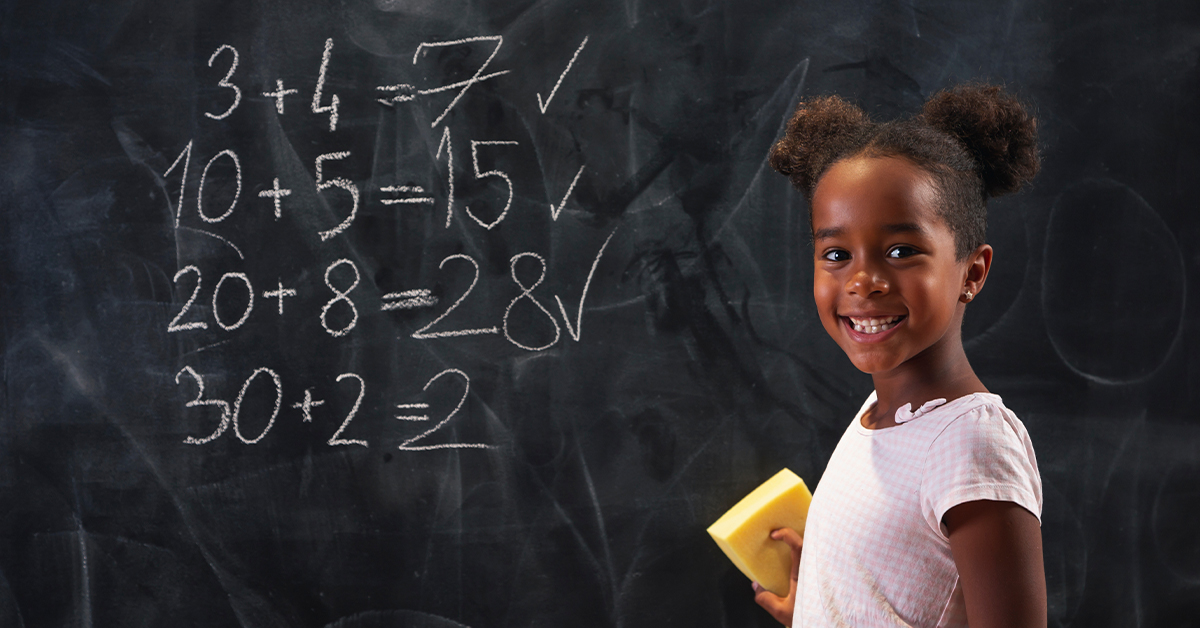

Leave a Reply